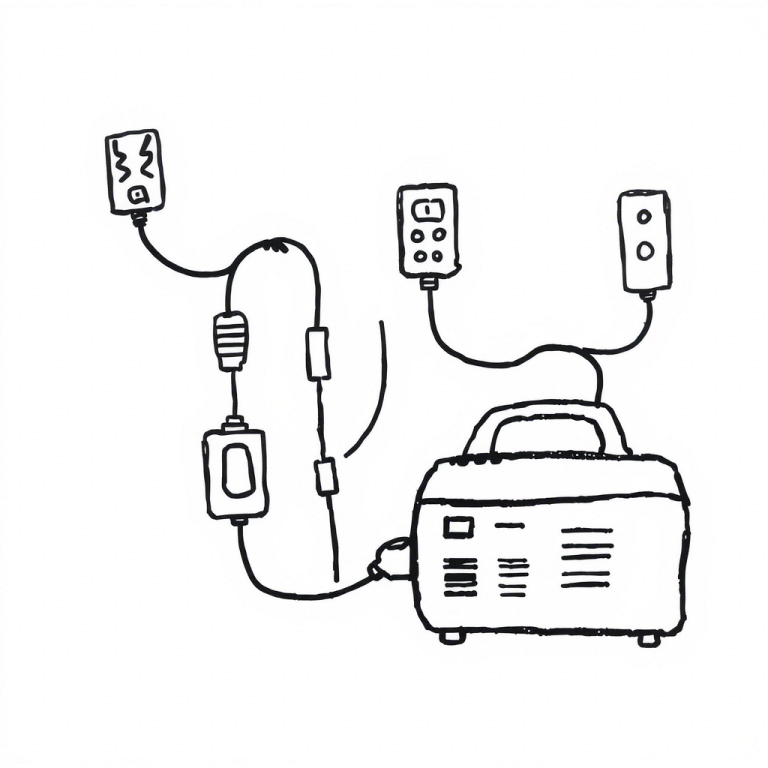How To Charge Goal Zero Yeti
I’ve relied on my Goal Zero Yeti for all my power needs off the grid. Whether camping or on a road trip, this portable power station never lets me down.
But to keep it running at its best, you need to know how to charge it effectively.
In this article, I’ll guide you through the various charging methods for the Goal Zero Yeti, so you can keep your devices powered wherever your adventures take you.
Let’s make sure you have the knowledge to keep your Yeti powered up for all your outdoor escapades.
Key Takeaways
- Charging with an AC wall outlet is the fastest and most efficient method for charging a Goal Zero Yeti.
- Charging with a 12V car adapter is a convenient option for charging the Yeti while on the go, especially during car travel.
- Charging with a solar panel is a useful option for remote locations where an AC outlet or car adapter is not available.
- To ensure safe and efficient charging, it is important to follow proper charging precautions, such as turning off the Yeti while charging, charging in a well-ventilated area, and avoiding overcharging or charging in extreme temperatures.
Charging With an AC Wall Outlet
To charge my Goal Zero Yeti, I simply plug its charging cable into an AC wall outlet and connect the other end to the Yeti. This method of charging is fast and efficient, making it the best option for quick charging.
The AC wall outlet charging efficiency ensures that my Yeti gets charged up in no time. The benefits of AC wall outlet charging are numerous. It allows me to quickly replenish the battery so that I can continue using my Yeti for various purposes.
Whether I need to power up my devices during a power outage or on a camping trip, the AC wall outlet charging method ensures that my Yeti is always ready to provide me with the power I need.
Charging With a 12V Car Adapter
I can charge my Goal Zero Yeti using a 12V car adapter by simply plugging its charging cable into the adapter and connecting the other end to the Yeti. This charging method is convenient for when I’m on the go or traveling in my car.
The charging efficiency will depend on the size of the Yeti and its battery capacity. It’s important to note that using the appropriate car charging accessories is essential for a safe and efficient charging process.
Charging With a Solar Panel
Using a solar panel for charging my Goal Zero Yeti is a sustainable and environmentally-friendly option. When it comes to solar panel efficiency, it’s important to choose the right one for optimal charging.
There are several best solar panel brands available in the market, such as Renogy, Jackery, and Goal Zero. These brands offer high-quality solar panels that can efficiently convert sunlight into electricity. To ensure the best charging experience, it’s recommended to select a solar panel with a suitable wattage for your Yeti.
Additionally, positioning the solar panel towards the sun and maximizing sunlight exposure can further enhance its efficiency. With a reliable solar panel, you can harness the power of the sun to keep your Goal Zero Yeti charged and ready to go, even in remote locations.
Tips for Charging a Goal Zero Yeti
One tip for charging a Goal Zero Yeti is to always turn off the Yeti while charging. This helps to prevent overcharging and ensure the charging efficiency of the device. Overcharging can damage the battery and reduce its overall lifespan.
By turning off the Yeti, you can prevent unnecessary power consumption and ensure that the battery is charged optimally. Additionally, it’s important to charge the Yeti in a well-ventilated area to prevent overheating. This will further enhance the charging efficiency and prolong the life of the device.
Taking these simple precautions will help you charge your Goal Zero Yeti effectively and maintain its performance over time.
Safety Precautions
When charging a Goal Zero Yeti, it’s important to follow safety precautions to ensure the well-being of both the user and the device.
One key safety precaution is to use the proper charging cable for the Yeti. Using a damaged or frayed cable can pose a risk of electric shock or damage to the device.
Additionally, charging shouldn’t be done near flammable materials or in wet conditions to prevent accidents or damage.
Another important safety measure is to avoid overcharging the Yeti, as this can lead to battery damage.
Charging Time Factors
With the Goal Zero Yeti, the charging time factors depend on the size of the Yeti and its battery capacity, as well as the type of charging method used. Here are some key factors to consider:
- Charging rate variations: The charging time can vary based on the charging method used. Charging with an AC wall outlet or a 12V car adapter is generally faster compared to using a solar panel.
- Impact of weather conditions: When charging with a solar panel, the charging rate may vary depending on the size of the solar panel and the availability of sunlight. Cloudy or rainy weather can slow down the charging process.
- Yeti size and battery capacity: Larger Yeti models with higher battery capacities will take longer to charge compared to smaller models. It’s important to consider the charging time when planning your power needs.
- Efficiency of charging method: Some charging methods, such as using an AC wall outlet, provide faster and more efficient charging compared to others. Understanding the charging capabilities of each method can help you choose the most suitable option for your needs.
Benefits of Charging With an AC Wall Outlet
I can experience the benefits of charging my Goal Zero Yeti with an AC wall outlet. One of the major advantages is the charging speed. When I connect my Yeti to an AC wall outlet, it charges much faster compared to other methods. This is particularly useful when I need to charge my Yeti quickly and efficiently.
Additionally, charging with an AC wall outlet is also energy efficient. It ensures that the power is transferred directly from the outlet to the Yeti without any loss, resulting in efficient and effective charging.
Benefits of Charging With a Solar Panel
One of the benefits of using a solar panel to charge my Goal Zero Yeti is its sustainability. Not only does solar charging help me reduce my carbon footprint, but it also offers several advantages over other charging methods.
Here are the benefits of charging with a solar panel:
- Renewable Energy Source: Solar panels harness the power of the sun, which is a clean and renewable energy source. By using solar charging, I’m reducing my reliance on fossil fuels and contributing to a greener future.
- Cost Savings: Once I’ve invested in a solar panel, the energy it provides is essentially free. This means I can enjoy long-term cost savings on my energy bills, especially if I frequently charge my Yeti using solar power.
- Portability: Solar panels are lightweight and portable, making them ideal for outdoor activities or remote locations where an AC outlet or car adapter may not be available. I can easily carry my solar panel and charge my Yeti wherever I go.
- Maximizing Solar Panel Efficiency: To make the most of solar charging, it’s important to maximize the efficiency of the solar panel. This can be done by positioning the panel towards the sun, ensuring it receives maximum sunlight exposure throughout the day.
Conclusion
In conclusion, knowing how to charge your Goal Zero Yeti effectively is crucial for powering your devices during outdoor adventures.
Whether you prefer the convenience of an AC wall outlet, the portability of a 12V car adapter, or the eco-friendly option of a solar panel, there are charging methods to suit your needs.
By following safety precautions and maximizing charging efficiency, you can ensure that your Goal Zero Yeti is always ready to keep you connected, no matter where your outdoor escapades take you.



